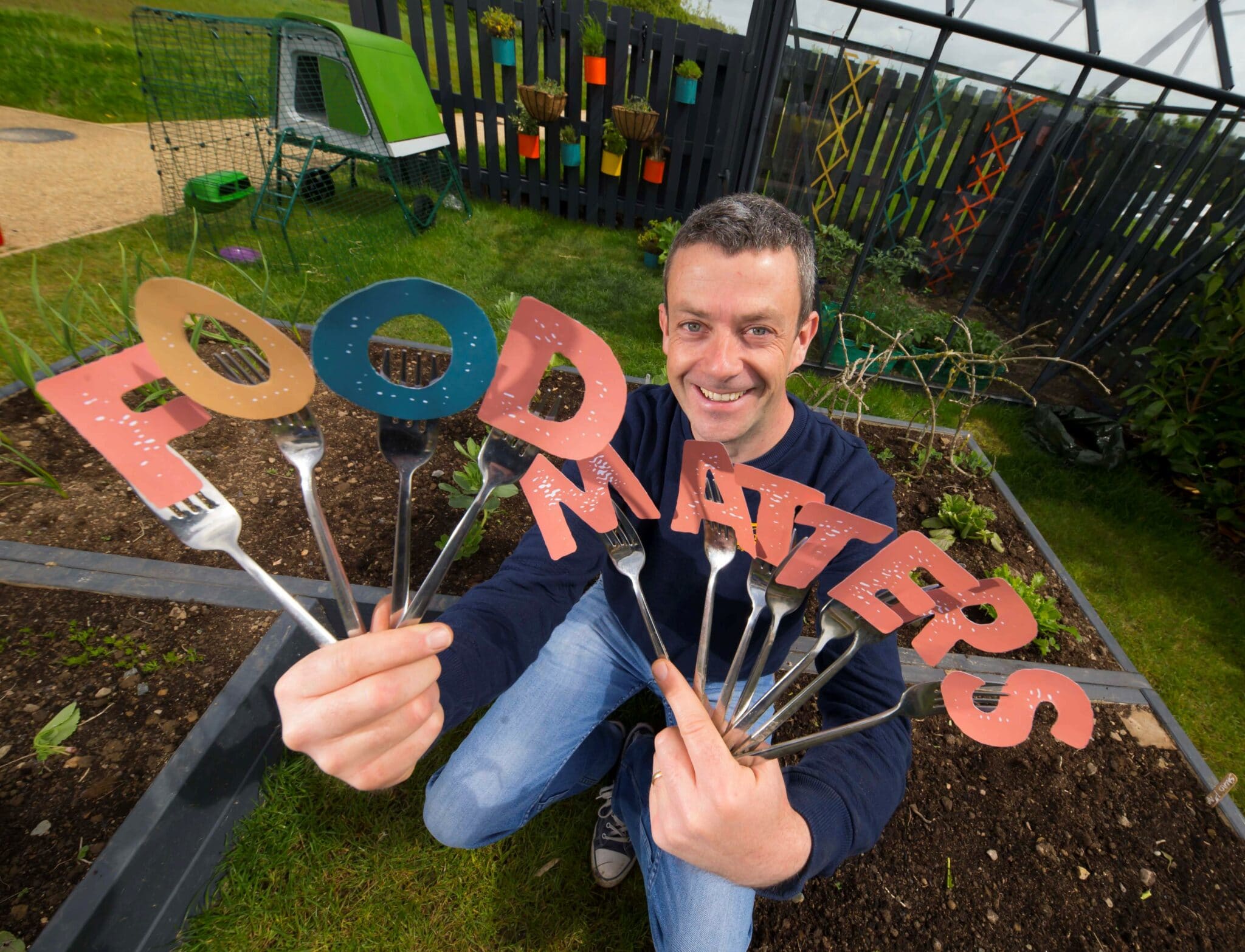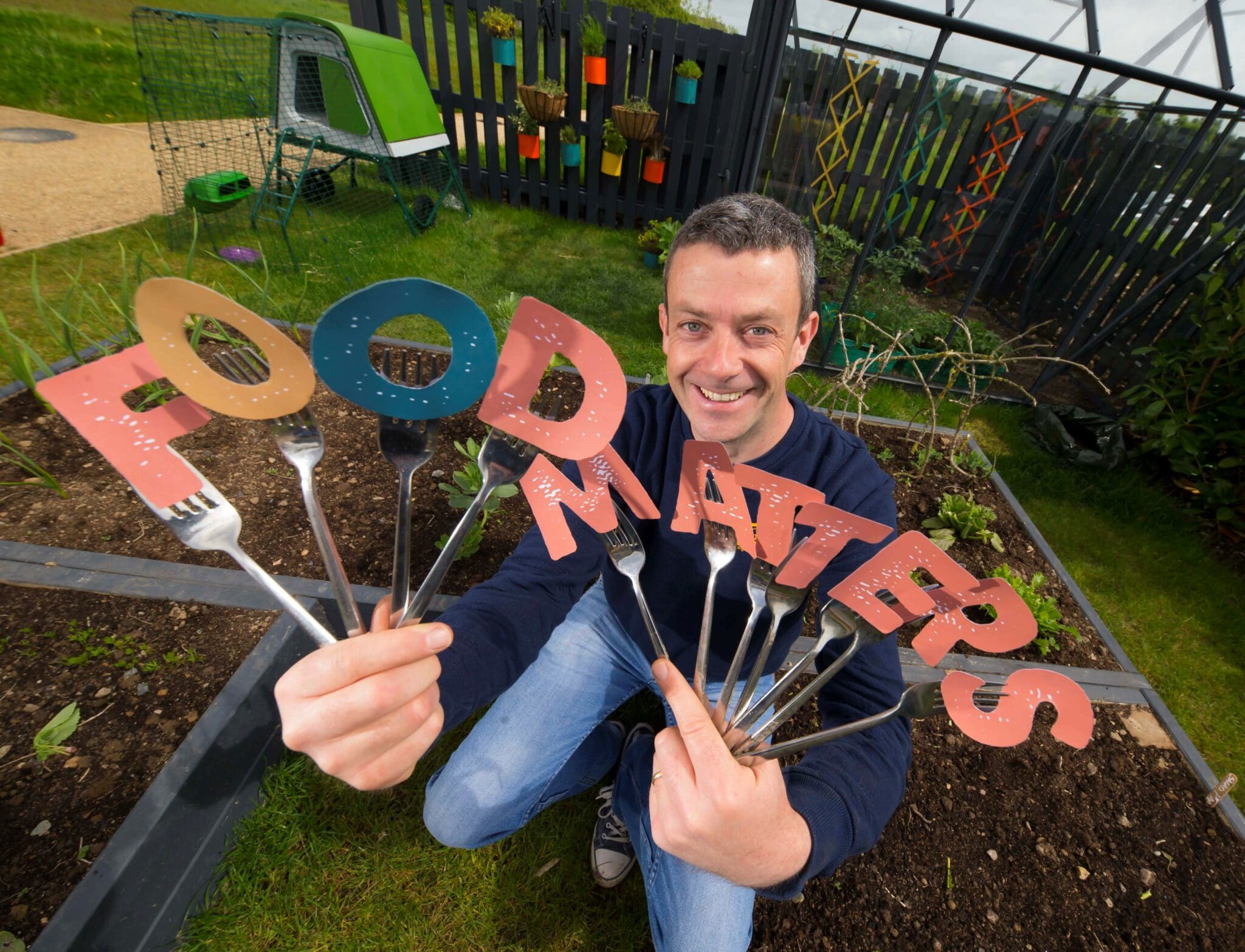
There’s real magic in growing your own food, whether on a windowsill or garden plot. Mick Kelly of Grow it Yourself celebrates the new wave of domestic vegetable growers and shares encouragement for those who want to join in the fun.
When we started GIY in 2008, the bottom was about to fall out of the economy and food growing was something tangible for people to hold on to when
The challenge for us in GIY is to support this new wave of growers and encourage society at large to grow some of their own food in the post Covid world. In fact, we’ve set ourselves the audacious goal to reach 100 million people by 2030 as part of the UN’s Decade of Action for Climate Change. As ridiculously ambitious as this might sound, I think people are ready, even eager, for this shift. We can state with confidence that the diet we’ve created for our modern world pretty reliably makes us (and this planet we share) sick. Our addiction to highly processed foods has created a pandemic of human ill-health while our reliance on the industrialised food system plays an outsized role in climate change.
On an individual level, ultimately I think people are getting a little sick and tired of the nonsense around food. The faffing. The confusion. The complexity. Processing food to within an inch of its life. Wrapping it in cellophane. Then wrapping it again. Importing things we can grow perfectly well here all the way from Kenya or China just because it’s cheaper to do so. Cutting entire food groups from our diets – gluten, dairy, meat, carbs – even though we’re not 100% sure why.
Therein lies the magic of growing some of your own food. Even if we only grow 1% of the food we eat, we create a more meaningful, sensible and simpler relationship with real food. In GIY, we call it ‘food empathy’. The more we connect with whole foods grown in the living soil, the more alien the processed gunk seems to be. And as a result, the 1% of food we grow has an impact on the 99% of food we have to buy. A food empathetic consumer makes healthier and more sustainable choices standing in the supermarket aisle – buying more local, seasonal, organic food; wasting less and eating more plants.
Once you start growing, a myriad of other benefits present themselves. It is a purposeful, mindful activity that takes you out of your headspace and in to your hands. GIYers are always looking forward to the next season, which makes it a profoundly optimistic and forward looking act. There are health benefits in the very act of growing – being out in the fresh air, doing a physical activity, with our hands in the soil (contact with soil is known to promote endorphin release).
Perhaps best of all, eating food that you have just plucked from the soil yourself means that you get to taste food at its prime, in a moment of perfect, nutrient-dense deliciousness. Carrots that taste like carrots used to taste; tomatoes bursting with sweetness; onions packed with flavour.
That’s the prize, and this is your year to become a GIYer. So what are you waiting for?
Getting Started
The first and best piece of advice is this: just start. Don’t wait until next month or next year. You don’t need green fingers (they are a myth) or a degree in Latin. Don’t be afraid. As pastimes go, it’s really not that scary. Get yourself some seeds and sow them. The good news is that all seeds want to grow, and they already know how to do it and what they want to become. So more than likely, they will grow. And, If not? Well, let’s face it, it’s not the end of the world.
This is not a hobby where you have to spend lots of money to start. On a basic level you need seeds and something to grow them in. That means some good compost (more on that anon) and something to put the compost in. For smaller scale growing that could be seed trays, pots, containers (or even an upcycled colander, pair of wellies, a Belfast sink etc) or for a slightly bigger scale, buy or build a timber raised bed.
You can buy seeds in lots of places these days: garden centres, supermarkets, online (shameless plug: www.giy.ie). It’s really only if you move beyond the container growing phase that you might need to buy some basic tools, like a trowel, spade, fork and rake. A hoe is a mighty way to stay on top of weeding if you have a larger area to manage. Don’t waste money on gloves: get your hands dirty, it’s good for the soul.
Top Tips for Growing
Tips for Growing Indoors
- A sunny windowsill indoors is basically like a greenhouse, so it’s ideal for getting seeds going and growing plants like tomatoes that like some heat.
- Most herbs will do very well indoors. Try parsley, thyme, coriander, mint, lemon balm, sage and basil.
- You can grow a serious array of interesting salad leaves in pots or trays pretty much all year round indoors. Focus on quick growing leaves like mustard, mizuna, pak choi or rocket, or grow peas to eat as shoots in salads or stir-fries.
- Grow dwarf varieties of veg like French beans and tomatoes. Peppers (chilli and sweet) are compact little plants that do very well indoors.
Time for Balcony Growing
- Go vertical to make the most of space. Each shelf of a plastic greenhouse will support five or six pots and they generally have a zippable plastic cover to keep plants toasty warm on cold nights. Stash your tools, compost etc on the ground beneath the shelves.
- Work out which plants should go where based on which part of your balcony gets the most sunlight. Some plants need direct sunlight while others prefer partial shade.
- Use balcony railings to trail climbing plants like runner beans. You can also hang rectangular planters for lettuce and other plants that have shallow root systems (e.g. beetroot).
- Use netting or bamboo screens to act as a windbreak if your balcony is windy. On the plus side, slugs are generally not a problem several floors up.
Tips for a Small Garden
- Since the top soil in most gardens is shallow and poor (particularly in the standard urban housing estate garden), raised beds are an ingenious cheat that allows you to create a foot or more of good quality top soil on top of your existing soil.
- In the suburban demo garden at GROW HQ we have three 2m x 1m raised beds, a greenhouse, a hen coop and a beehive. There’s also a patio and lawn but admittedly no clothes line or trampoline.
- Raised beds can be any size and shape you want but they should never be more than 1m wide so you can reach in to the centre from both sides (never stand on the soil). Fill raised beds with a mix of around 70% topsoil and 30% compost.
GIY’s Top 5 Veg to Grow
Potatoes
- Sow seed potatoes from March on – seed potatoes are potatoes saved from the previous year.
- Early potatoes produce ‘new’ spuds that are typically harvested in June. Main crop potatoes have a longer growing time and develop harder skins.
- Potatoes can be grown in deep grow bags, containers or in raised beds.
Beetroot
- Sow regularly from March onwards. Start in trays indoors before planting out 10cm apart.
- Use the leaves as salad leaves.
- Can be grown in window boxes are outside in raised beds.
Peas
- Sow from April and harvest from July to September.
- Support pea plants with sticks or bamboos – plants get heavy.
- Grow in window boxes, lengths of guttering or outside in raised beds.
Tomatoes
- Grow in the soil, in pots or grow bags, but for best results, grow indoors or in a greenhouse.
- Sow seeds in February and plant out in May. Harvest from July.
- Water and feed well throughout the growing season and “pinch out” side shoots regularly.
Salad Leaves
- Sow a small number of seeds every two weeks from February to August for a continuous supply.
- Salad leaves can be started off in trays or pots and planted out when seedlings.
- Slugs are your nemesis when it comes to growing salad leaves – use organic slug pellets, beer traps or copper wire to keep them at bay.
Explore & Book
Food & Drink Experiences
Vintage Afternoon Tea At Newbridge Silverware
What You’ll Get The Exclusive Good Food Ireland® Vintage Afternoon Tea Experience at Newbridge Silverware with a Museum of Style Icons visit & a 20% Discount Voucher for Newbridge Silverware Shopping Included, and free car parking. Domo’s...Craft Beer & Seafood Trail of Howth, Dublin
Craft Beer & Seafood Trail of Howth Perfect for the man in your life for Valentine’s Day. What better way to spend an afternoon, than eating the best locally caught Seafood in Ireland, washed down with an ample amount of local Craft Beer. Add...Majestic Afternoon Tea at the Maryborough Hotel – Cork
Perfect for Valentine’s Day. Upon arrival, be welcomed by the warm and attentive team at the stunning Maryborough Hotel and Spa in Maryborough, Cork. When making your reservation you have the wonderful option to take Afternoon Tea in the beautiful...


